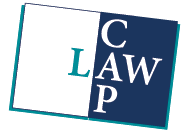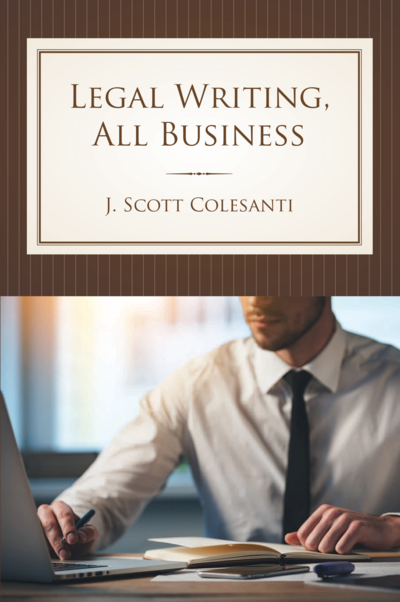Legal Writing, All Business
2016
Tags: Legal Writing
Teacher's Manual available
246 pp $40.00
ISBN 978-1-5221-0528-2
eISBN 978-1-5221-0529-9
View Colesanti's Legal Writing, All Business website
This course book stresses the basics of Legal Writing, condensed to a 2-part formula. This universal formula is then demonstrated within a variety of legal documents, ranging from such traditional formats as the Office Memorandum and Trial Motion to such omnipresent forms as the industry Comment Letter and law school Note. Dedicated chapters focus on locating proper legal language and opportunities for practice at Legal Writing. Subtleties such as the consistent need for policy arguments and counter-analyses are also emphasized.
Each of the 14 chapters commences with clearly stated outcome objectives, followed by instruction. That instruction pauses for "Weak" and "Better" examples and exercises; both the examples and the exercises are focused on business law principles, cases, and statutes. The student thus engages in a true "learn as you go approach," completing over 30 exercises while gaining the additional takeaway of a familiarity with business law topics both time-honored (e.g., "piercing the corporate veil") and timely (e.g., Bitcoin, crowdfunding, and online gambling).
The accompanying Teacher's Manual includes detailed answers to each of the course book exercises, as well as considerations for follow-up discussion and an additional exercise per chapter. The manual also suggests a model syllabus for a 14-week 1L Legal Writing course.
Overall, Legal Writing, All Business avoids the traps of omnibus legal writing texts (which stretch to cover research, analysis, oral argument and grammar) and scattered subject matter (ranging from torts to criminal law).
The author has taught Legal Writing for 9 years. He previously served as a litigator, arbitrator, and counselor. He has designed 10 law school courses and authored such documents as charging instruments, pleadings, settlements, office memos, trial motions, industry comment letters, blog postings, law review articles, and case comments.
Editorial Reviews
If you teach a first-year legal-writing class, you should consider using Colesanti's book as a text. Its substantive lessons are sound and will serve your students well in law school and beyond."—
Comp Copy If you are a professor teaching in this field you may request a complimentary copy.


